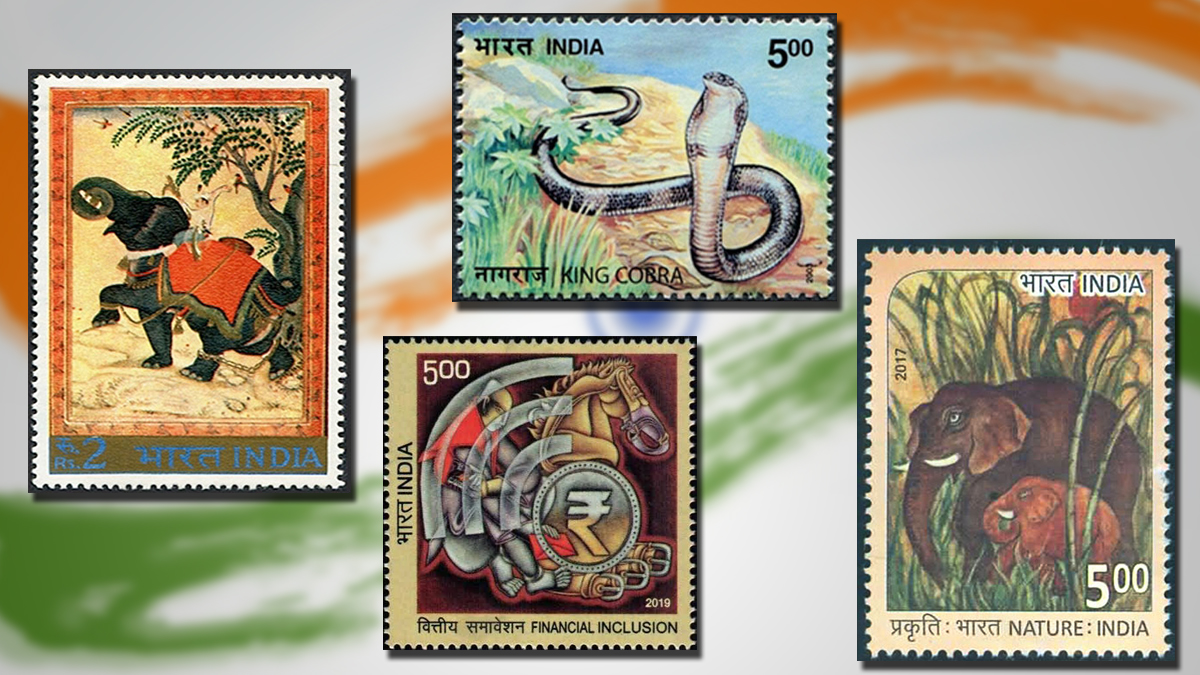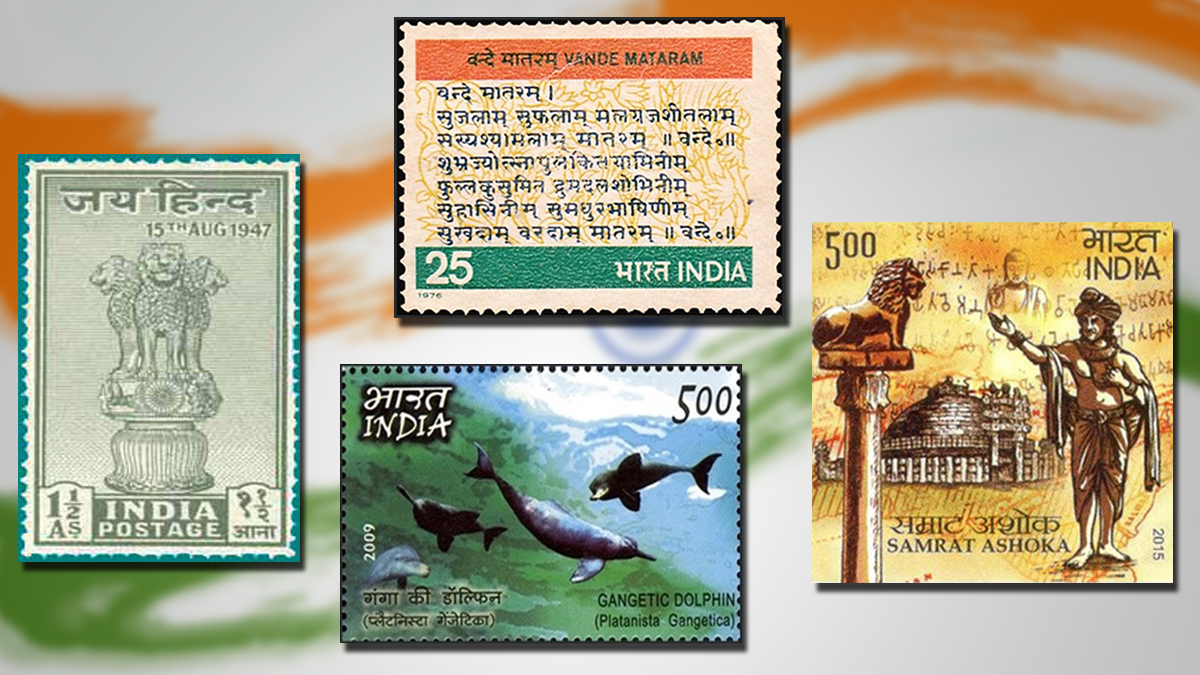India has many national symbols with which she identifies herself and takes pride in them. These symbols have been chosen from India’s unique flora and fauna, and culture and civilization. In a nutshell, these symbols say a lot about our motherland. To commemorate these beautiful symbols, India Postal Department has issued various stamps. Let’s continue our journey of exploring the various National Symbols of India featured on Stamps.
This section introduces you to the National Identity Elements of India. These symbols are intrinsic to Indian identity and heritage. Indians of all demographics backgrounds across the world are proud of these National Symbols as they infuse a sense of pride and patriotism in every Indian’s heart.
Here is the list of 6 National Symbols of India featured on Stamps you should know.
National Reptile: King Cobra
Indian culture, religion, and philosophy give the national reptile King Cobra a significant aspect and perception. In India, this snake is associated with Lord Shiva’s ornament, Kundalini energy, and speech. It is also seen as a Demi-God.
The King Cobra is the largest venomous snake in the world. Growing to around 3m in length, the King has the ability to inject up to 6ml of venom in a single bite. Cobra survives on prey like reptiles, insects and other snakes. A resident of dense rain forests and thick jungles, this shy animal is very rarely seen. Indian Cobra varies in color grey, yellow, tan, brown, reddish or black.
The 500 Paise commemorative postage of India depicts this widely worshipped King Cobra quite gracefully.
National Currency: Rupee
The official currency of the Republic of India is the Indian Rupee, its symbol is derived from the Devanagari consonant “र” (Ra) and Latin letter ‘R’ adopted in 2010 by the Government of India. The two horizontal stripes in the symbol represent the Indian flag according to the designer. This symbol epitomizes India’s international identity for money transactions and economic strength.
The 500 Paise commemorative stamp which issued on 30th January 2019 featured the Rupee symbol on it.
National Heritage Animal: Elephant
Serene, calm, intelligent and powerful this national heritage animal of India has been the source of inspiration for all the philosophies developed here. This huge land mammal has graced its presence in art, architecture and many coinages of this land.
An elephant is one of the most beloved animals in the world. They and their babies are very heartwarming and we cannot resist them. From kids to adults, elephants win the hearts of all ages. In India, Elephant is worshipped as God. Ganesha is the most popular elephant-headed deity and we all know the story of how he got the head of an elephant. The elephant is also mentioned in the Buddhist Jataka. To commemorate this mighty animal, India Post issued various commemorative stamps.
National Aquatic Animal: Gangetic Dolphin
The national aquatic animal of India is Ganges River Dolphin or Gangetic Dolphin. It’s a freshwater Dolphin found in rivers like Ganga, Brahmaputra and their tributaries. This aquatic fish is also called a freshwater tiger. itis embellished on art and architecture. These shy mammals are featured on stamps of India to highlight the threats faced by this species.
National Song: Vande Mataram
Vande Mataram is not only the praise of our motherland, but it was also the slogan of freedom. This immortal song of our nation was composed by Bankinchandra Chatterjee in 1876. It was also published in his novel Anandamath (Abode of Bliss) in 1882. This poem was translated into many different languages, but originally it was composed in Bengali and Sanskrit. To celebrate and remember the impact on this poem in the form of Slogan during Indian freedom struggle Indian post issued a 25 paisa commemorative stamp on 30th December 1976. This stamp consists of the first stanza of the poem Vande Mataram.
I praise thee, Mother. I bow to thee Mother
– Translation in English of Vande Mataram’s 1st line
In 1905 AD the partition of Bengal reformed the course of Indian Independent Movement and Vande Matram turned into the revolutionary War Cry, the Freedom Cry.
The fame of this song reached abroad when Netaji Subhas Chandra Bose the supreme commander of Azad Hind Fouz(INA) set this song into the tune that was used as the marching song. It was broadcasted on the radios in Singapore during World War I. Later when Gopal Krishna Gokhale visited South Africa in 1912, a mammoth gathering greeted him at Capetown with the slogan ‘Vande Mataram‘.
This song had such an impact on people that the British government tried to prohibit the shouting of Vande Mataram in schools, Colleges, and Public places. This resulted in the ‘lathee charge’ and imprisonment of Masses throughout undivided India.
National Emblem: Lion Capital of Ashoka
The National Emblem of India integrates the Lion Capital of Emperor Ashoka at Sarnath. Its graphic representation was adopted on 26th January 1950. The actual Sarnath capital features Asiatic lions standing back to back, symbolizing power, courage, confidence, and pride, mounted on a circular base. In the representation, only three Asiatic lions are visible. The horse represents the west and Bull depicts south, separated by a wheel (Dharma Chakra) illustrated on an abacus. Below is the motto inscribed in Devanagari ‘Satyameva Jayate’ meaning ‘Truth Alone Triumphs’. Our National Emblem featured on many stamps issued by India Postal Department!
National symbols of India provide a unique identity to the nation and project a picture of it as a cultured country in our minds. Currency, flora and fauna and even the music have been assigned special symbols, instilling feelings of pride and patriotism among the citizens. The symbols have been chosen at different times. They have a unique meaning, symbolizing strength, purity, immortality, power, pride, and courage. As defined above, the Indian National Symbols play a vital role in making the identity of our country, bringing the diverse cultures together and binding them in a single string. This blog covers some of the beautiful aspects of National Symbols of India featured on Stamps. Stay tuned for more of us fun and interesting articles!
The post National Symbols of India featured on Stamps – Part II appeared first on Blog | Mintage World.


Comments
Post a Comment